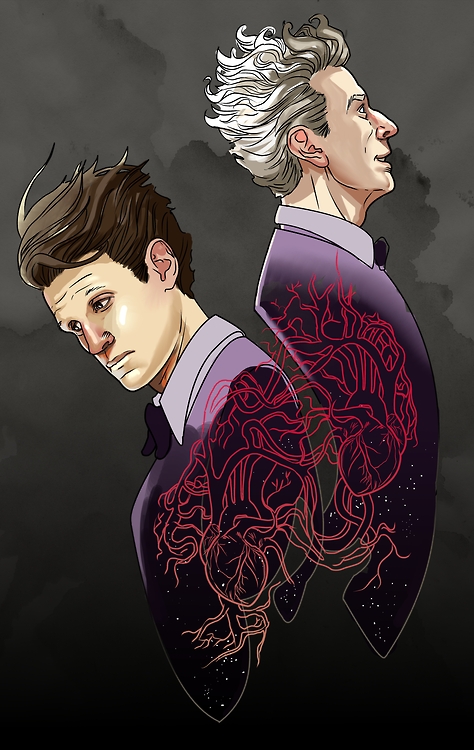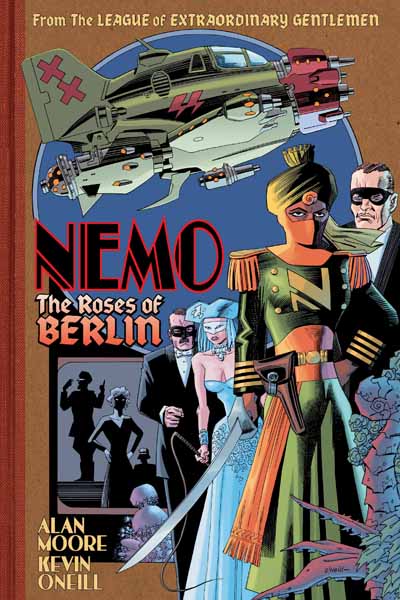2.05)
The Apple
or
Captain
Kirk vs. Another Computer
The
Mission: Investigate the
unusual readings on an inhabited planet (there's a definite undertone
suggesting that the Federation is looking at colonising it).
Planets
visited: Gamma
Trianguli 6, an incredibly lush planet with an impossibly steady
temperature throughout. It
has exploding rocks and flowers that short deadly poison darts with a
funny 'boing!' noise.
Stellar
Cartography: Gamma
Trianguli is a young, hot star 112 light years from Earth, and is
very unlikely to have any inhabitable planets. Maybe whoever built
Vaal built the whole planet?
Captain
James T: He
tells Chekov off for flirting, the hypocrite. He is more upset than
usual by Mallory's death, having known his father. We see an
unusually self-recriminatory Kirk, balming himself for taking risks
on the planet. Kirk destroys Vaal in order to let the Enterprise
escape,
returning the aliens to a natural way of life, and decides to take
his chances with Starfleet after he breaks the Prime Directive. Then
again, it's certainly an argument that four hundred crewmen outweigh
a dozen natives.
Green-Blooded
Hobgoblin: He
steps in front of a killer plant to save Kirk, but fortunately, his
blood is less affected by the poison. He walks slap-bang into Vaal's
forcefield, and later gets zapped by lightning.. He is far more
accepting of an alien way of life than Kirk or McCoy, pointing out
that they are healthy and happy. He gets embarrassed talking about
sex, which isn't very logical.
The
Real McCoy: Naturally,
he is opposed to Spock's view, and takes offense at a humanoid
society being held as slaves, as he sees them, without any social
progress.
Alien
life forms: The
Vaalians/People of Vaal: Standard superstitious savages, played by
white guys blacked-up (well, oranged-up) in skimpy clothes and face
paint. They worship Vaal as a god, which is pretty reasonable, as he
controls their entire world. Sex is forbidden and their are no
children, since Vaal keeps the people alive and young indefinitely.
Killer
Computer: Vaal,
a super-powerful machine housed beneath the surface, accessed via a
dragon's head carved into the rock. It has access to formidable
planetary defences, controlling the weather and affecting the
Enterprise
in
orbit. It needs to eat, for some reason. Vaal
is able to drain the antimatter pods of the Enterprise,
and inhibits the transporters. (“We can't beam up a fly!”
Probably a good thing, that, we know what happens when you teleport
flies.)
Sexy
Trek:
Yeoman Landon is there purely to be Chekov's girl for the week,
introducing sex back into the world of Vaal. Onlooking Vaalians are
immediatley moved to start trying out the Earth thing called kissing.
Cliche
Count: “He's
dead, Jim!” All four male redshirts get killed. Akuta actually says
“What is love?” Chekov comes out with another bit of pro-Russian
absurdity, claiming that the Garden of Eden was located just outside
of Moscow. (Nonsense, it was in Brentford.)
The
Alternative Factor: Cupcake,
the burly guard in the new Star
Trek movies,
is apparently the alternative universe version of Hendorff, the
redshirt who gets killed by the killer flower at the beginning of the
episode. 'The Redshirt's Tale' comic story is the alternative version
of this story.
Space
Bilge: DeForest
Kelley can't pronounce Hendorff.
The
Vedict: Passable
fluff for the first fifteen minutes, but once Akuta shows up, it dips
into dreary, mildly offensive “white man's burden” stuff. I'm
with Spock on this one: these people were pefectly happy and weren't
hurting anyone until Starfleet interfered. If the dozen or so of them
are the only population on the planet, as it looks, they're not going
to last long before inbreeding takes its toll.
2.06)
The Doomsday Machine
or
Captain
Kirk vs. Commodore Decker
The
Mission: Stop a machine that is
threatening all life in the galaxy.
Planets
visited: None,
for good reason: all but two planets in the sector have been
destroyed by the Doomsday Machine.
Stellar
Cartography: The
Machine's path has taken it through star system's L-370 and L-374,
and into the most populous region of the galaxy. Rigel, with a
population in the many millions, is next in line.
Alien
Treknology: The
Doomsday Machine, or Planet Killer, is an ancient device of unknown
origin, possibly from another galaxy. It's a gigantic robotic weapon,
miles long, with an impenetrable hull of solid neutronium, and a
huge, burning maw. It carves up planets with a beam of pure
antiprotons, draws the rubble into its mouth and uses it for fuel;
essentially, it eats planets.
Captain
James T: Torn between his
friendship and respect for Commodore Decker, and his realisation that
the Commodore is clearly disturbed. He's practical enough to join in
the repairs on the Constellation.
He's also willing to take full authority for any insubordination
against Decker in order to get his own ship out of harm's way.
Crazy
Commodore: A respected officer
of the fleet, Commodore Matthew Decker is the commander of the USS
Constellation and
Kirk's direct superior. He's never lost a ship before now. Faced with
no way to fight the Planet Killer, he beamed his crew down to the
third planet of L-374, ready to go down with his ship, only to listen
helplessly as the planet was destroyed with his people on it. His
guilt over this decision has broken him, leaving him with a suicidal
vendetta against the Machine.
Green-Blooded
Hobgoblin: He claims that
Vulcans never bluff (a bit like they supposedly never lie). He's far
more bound by regulations than either Kirk or Bones, but his loyalty
to his captain – and Decker's evident psychological problems –
convince him to take command.
The
Real McCoy: Unsurprisingly, the
least regulation-bound of the three core crew, but anable to support
his claim that Decker should be removed from command on medical
grounds since he has been unable to formally examine him. By now,
it's looking clear that his sparring with Spock is a useful way for
them both to let off some steam in stressful situations.
Cliche
Count: “I'm
a doctor, not a mechanic!” This is Trek's
first go at a Moby
Dick
story, but far from its last. It's the second episode in a row
involving an ancient alien robot of unknown origin (for all we know,
the same people built both Vaal and the Planet Killer; after all,
they're both destructive alien machines that need to eat).
Links:
Matt Decker is the father of
Will Decker, Kirk's scheduled replacement as captain of the
Enterprise in
The Motion
Picture.
Remastery:
This is one of the episodes
that benefits the most from the remastering proess, making the
devastation reaped by the Planet Killer all the more frightening and
immediate.
The
Alternative Factor: Other
Doomsday Machines have turned up in the expanded universe media. Peter
David's rather excellent TNG novel Vendetta
suggests
that they were created to fight the Borg. His follow-up, Before
Dishonor,
had the original machine taken out of mothballs to fight a Borg
super-cube. A Star
Trek: Voyager comic
named 'Planet Killer' saw the ship fight another such machine in the
Delta Quadrant, and Star
Trek Online includes
a storyline in which the Klingons attempt to use one against the
Federation.
The
Verdict: One of the very best
episodes of Star Trek.
While the franchise will do the Moby
Dick thing
several times again, this is one of the best uses of the vendetta
storyline, and the most understandable. Both Shatner and William
Windom, as Kirk and Decker, are excellent as increasingly desperate
men in a hopeless situation. The fac tthat this is basically a
bottle episode means that there is more beudget for a larger cast,
making the Enteprise
seem
like a busy ship, throwig the ghost ship of the Constellation
into
sharper contrast. Decker's inevitable sacrifice is well-played and
affecting, with only the padding of the transporter malfunction
knocking the climax from perfection.
















